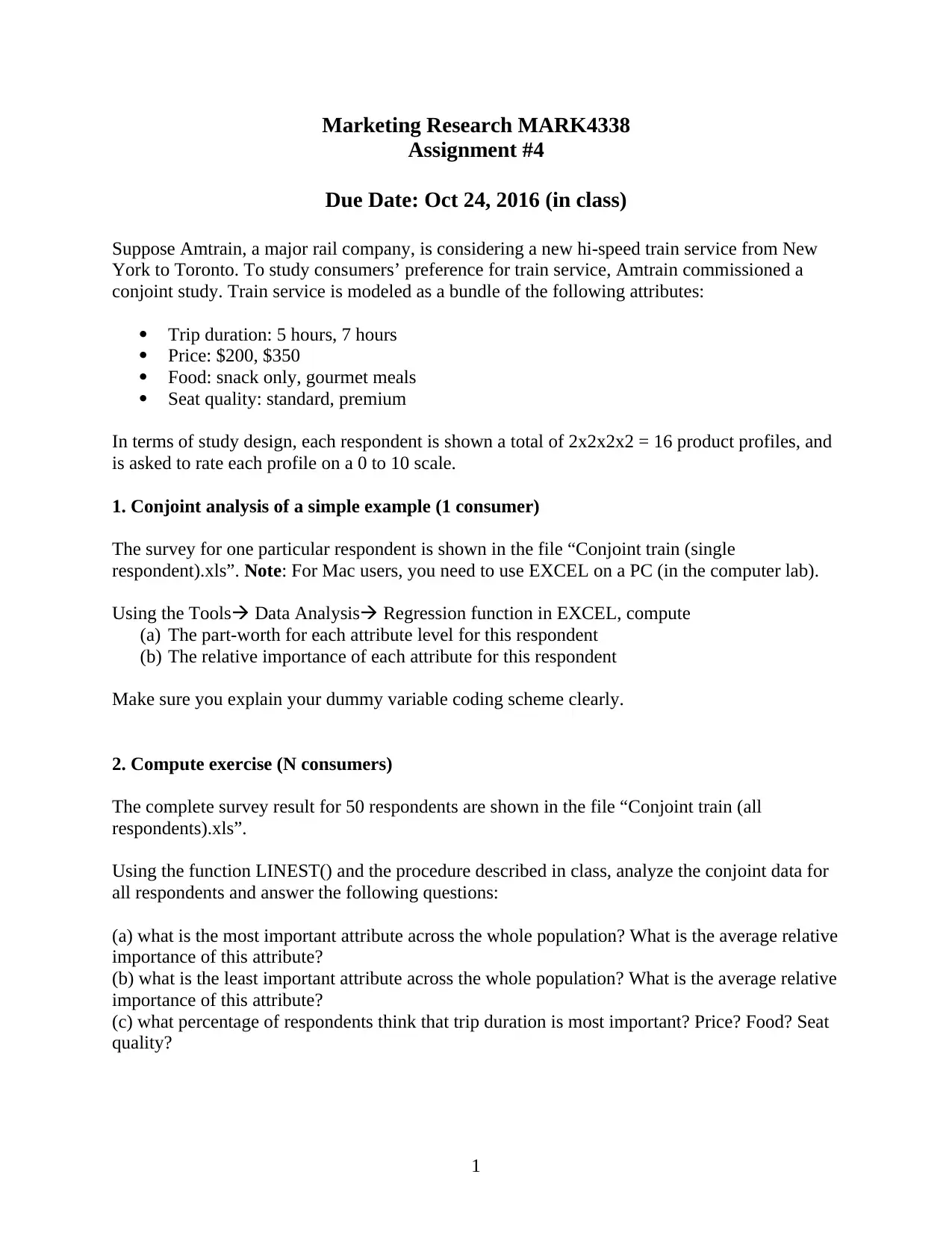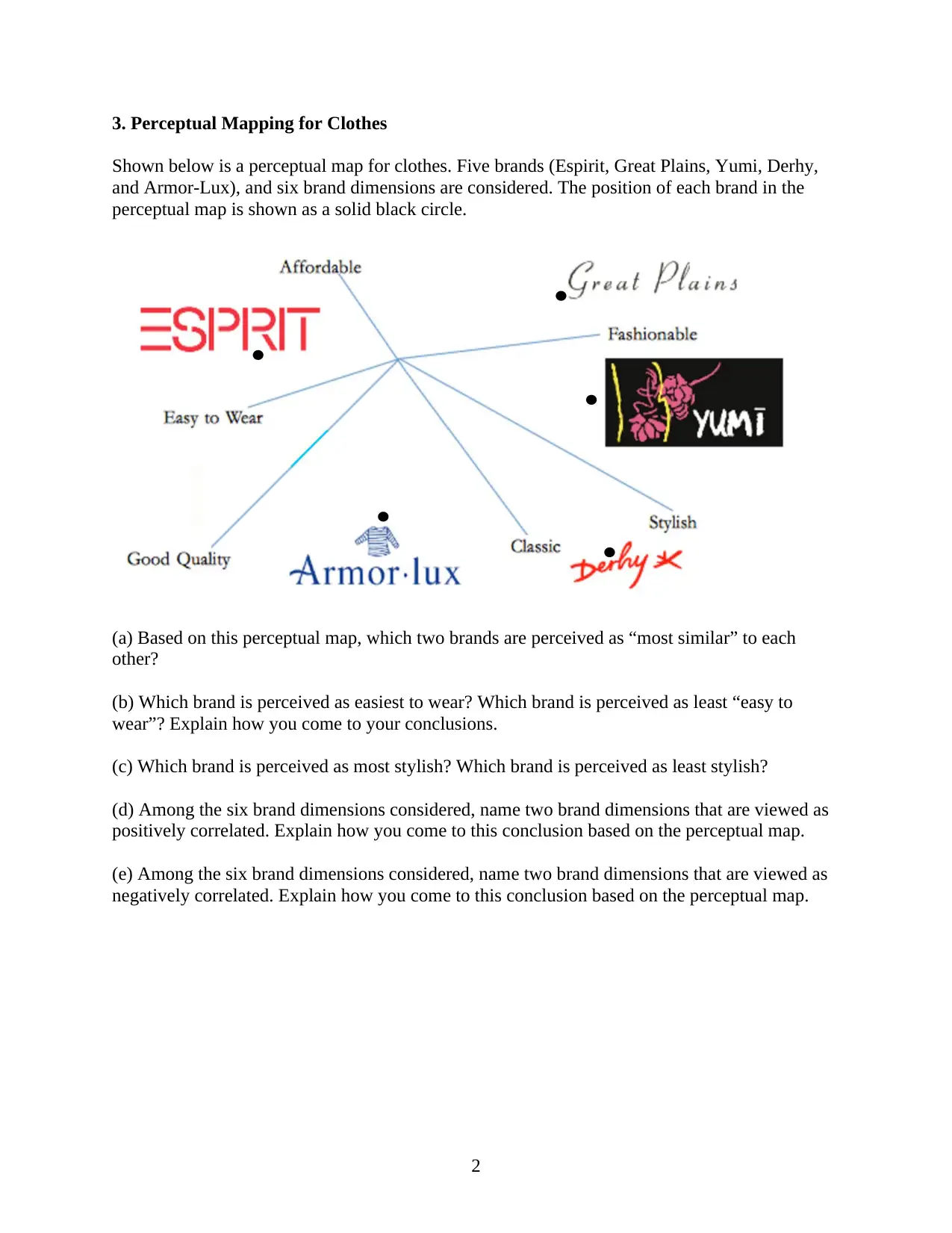MARK4338: Marketing Assignment on Conjoint Analysis and Mapping
VerifiedAdded on 2019/10/18
|2
|556
|388
Project
AI Summary
This marketing assignment involves a detailed analysis of consumer preferences using conjoint analysis and perceptual mapping techniques. The assignment begins with a single consumer example, calculating part-worth utilities and relative importance of attributes related to train service (trip duration, price, food, and seat quality). Subsequently, the assignment extends to a larger dataset of 50 respondents, utilizing the LINEST() function to analyze the conjoint data and determine the most and least important attributes across the population, along with their average relative importances. The analysis also includes determining the percentage of respondents who prioritize different attributes. Finally, the assignment explores perceptual mapping for clothing brands, analyzing brand perceptions based on a given map. This includes identifying similar brands, assessing ease of wear and style, and identifying positively and negatively correlated brand dimensions. The assignment aims to apply statistical methods and interpret marketing data to understand consumer preferences and brand positioning.
1 out of 2


![[object Object]](/_next/static/media/star-bottom.7253800d.svg)